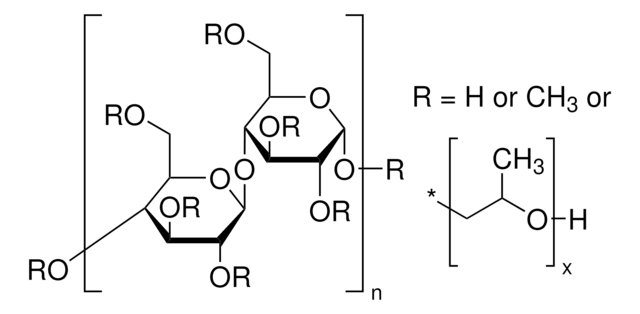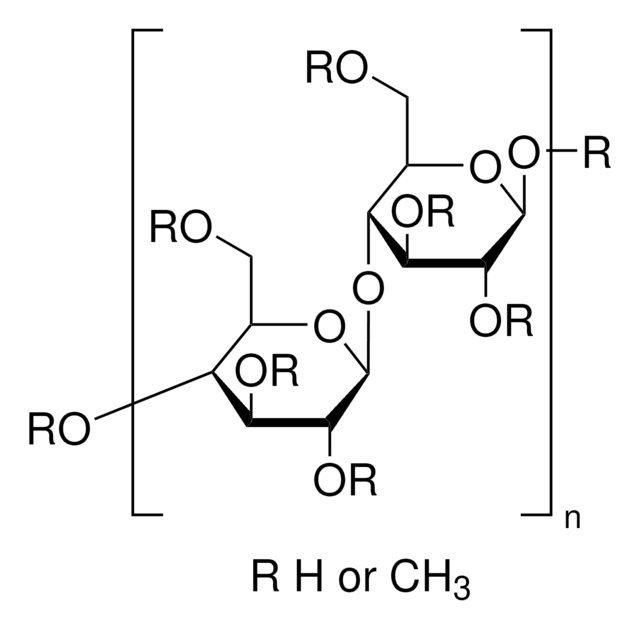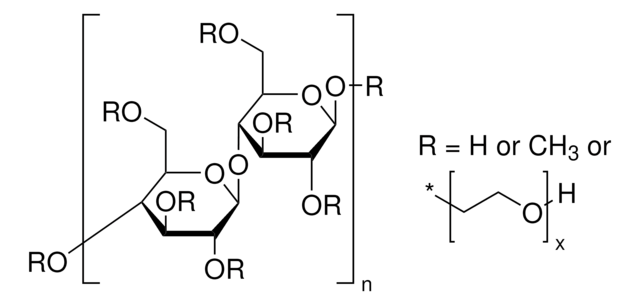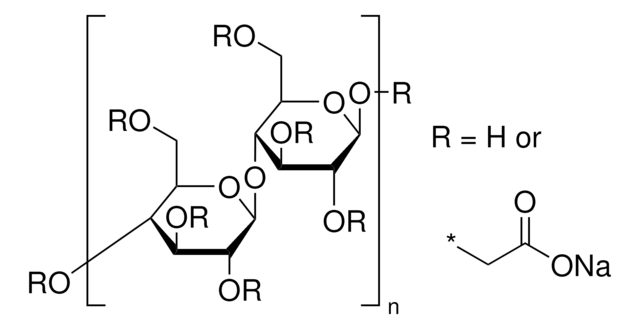308633
2-Hydroxyethyl cellulose
average Mw ~380,000
Sinonimo/i:
HEC
About This Item
Prodotti consigliati
Descrizione
Viscosity:300 - 400 cps, c = 2%; Water at 25° C
Livello qualitativo
Stato
powder
Temp. autoaccensione
725 °F
PM
average Mw ~380,000
Grado di funzionalizzazione
1.0 mol per mol cellulose (D.S.)
2.0 mol per mol cellulose (M.S.)
Punto di fusione
288-290 °C (dec.)
Densità
0.6 g/mL at 25 °C (lit.)
Stringa SMILE
O1C(C(C(C(C1CO)OC)O)OCCO)OC2C(OC(C(C2O)O)OC4C(OC(C(C4O)O)C)CO)COC3OC(C(C(C3O)O)OC)CO
InChI
1S/C29H52O21/c1-10-15(34)16(35)24(13(8-33)45-10)49-28-20(39)18(37)25(50-29-26(43-5-4-30)21(40)23(42-3)12(7-32)47-29)14(48-28)9-44-27-19(38)17(36)22(41-2)11(6-31)46-27/h10-40H,4-9H2,1-3H3
CWSZBVAUYPTXTG-UHFFFAOYSA-N
Cerchi prodotti simili? Visita Guida al confronto tra prodotti
Categorie correlate
Descrizione generale
Applicazioni
Codice della classe di stoccaggio
11 - Combustible Solids
Classe di pericolosità dell'acqua (WGK)
WGK 1
Punto d’infiammabilità (°F)
Not applicable
Punto d’infiammabilità (°C)
Not applicable
Dispositivi di protezione individuale
Eyeshields, Gloves, type N95 (US)
Scegli una delle versioni più recenti:
Possiedi già questo prodotto?
I documenti relativi ai prodotti acquistati recentemente sono disponibili nell’Archivio dei documenti.
I clienti hanno visto anche
Global Trade Item Number
| SKU | GTIN |
|---|---|
| 308633-25G | 4061833596456 |
| 308633-500G | 4061826674901 |
Il team dei nostri ricercatori vanta grande esperienza in tutte le aree della ricerca quali Life Science, scienza dei materiali, sintesi chimica, cromatografia, discipline analitiche, ecc..
Contatta l'Assistenza Tecnica.





